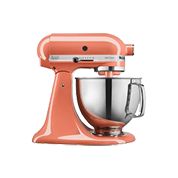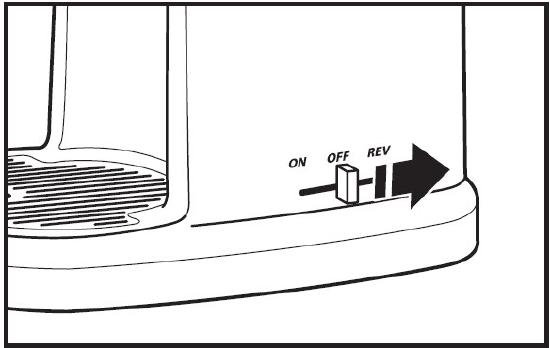Juicer tips
Food prep
- Thoroughly wash your fruits and vegetables, making sure they are free of soil, leaves, and stems.
- Small leaves, such as on strawberries, do not have to be removed.
- Large seeds or pits need to be removed prior to juicing to avoid damage to the auger or baskets.
- This includes fruits such as: nectarines, peaches, mangoes, apricots, plums, cherries, etc.
- Always peel fruits with hard or inedible skins. Examples include mangoes, citrus fruits, melons, and pineapples.
- Some vegetables, such as cucumbers or yellow squash, do not have to be peeled first, depending on the softness of the skin and recipe requirements.
- Leaving the peels on will change the color and flavor of the finished juices.
- For optimal performance, always use fresh fruits and vegetables.
DO NOT:
- Juice frozen fruits or vegetables to avoid damaging the juicer.
- Juice bananas.
While Juicing
- For optimum results, insert one piece of at a time.
- Slowly feed items into the juicer bowl, using the feed tube pusher.
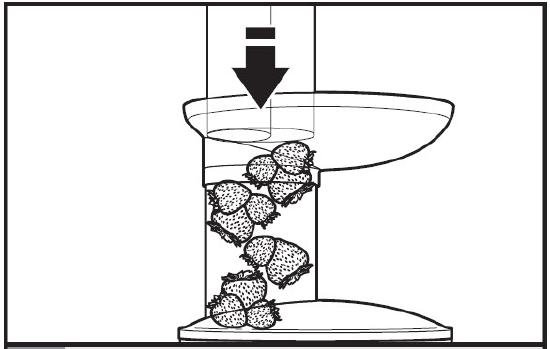
- When juicing celery with other fruits/vegetables, it is recommended to interchange the celery with other items to prevent pulp build-up inside the juice bowl.
- When juicing leafy greens like spinach and kale, it is recommended to juice with a combination of watery or fibrous fruits and vegetables to help with juice flow and to increase juice yield.
- For less foam build-up and seeds/particles in your juice, use the foam screen to strain these sediments before they go into the juice.
Pulp chute position
• The pulp chute controls how much fibrous material or pulp exits through the juice chute.
- Pulling the pulp chute out closes the chute, increasing the amount of pulp and fiber for your sauce recipes.
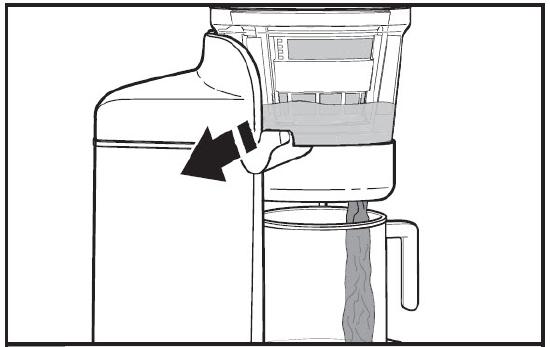
- Pushing the pulp chute in opens the chute, reducing the amount of pulp for your juice recipes.
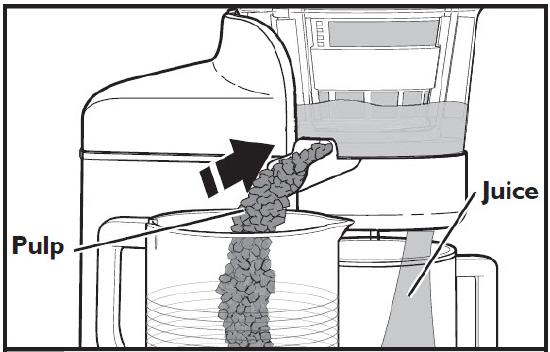
- For juicing: push pulp chute in to open
- For sauces and jams: pull pulp chute out to close
- Remember to open the pulp chute when using the high or low pulp screens.
- Keeping the pulp chute open will prevent the Juicer from locking up.
- The rubber gasket on the bottom of the juicer needs to be in place to reduce loss of juice into the pulp chute. Only remove the rubber gasket if you want juice to flow into the pulp ejector.
Clearing a Jam
|
Extracting the maximum amount of juice
• Run Juicer Attachment for 1-2 minutes after the last piece of food is inserted to ensure the maximum amount of juice is extracted.
Cleaning
- As you juice, clean parts to avoid dried-on juice and pulp.
- After each use, immediately rinse removable parts in hot water to remove pulp and juice.
- It may be necessary to use the cleaning brush to remove pulp from the screen.
- Let parts air dry.
What to do with the pulp
- Saved pulp can be used for other recipes, as compost for your garden, or can be discarded.
Juicer bags
NOTE: We do not recommend using juicing bags, as it impairs the juicing process and will cause the juice to leak from the juicer.
The juicer and pulp containers are very easy to clean.










.png)



